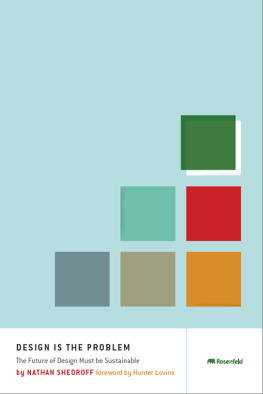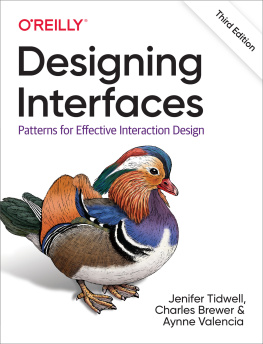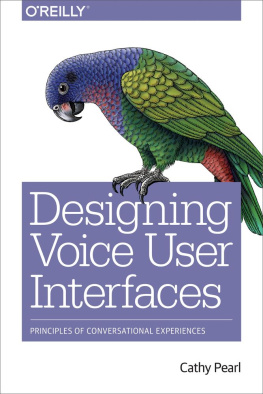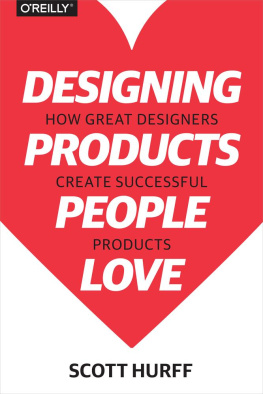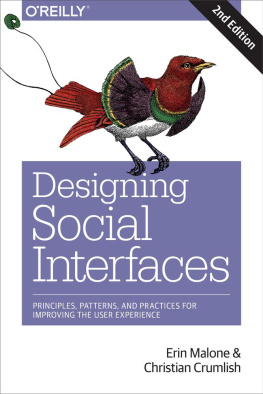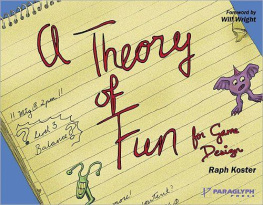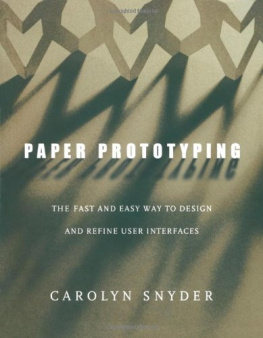MAKE IT SO
INTERACTION DESIGN LESSONS FROM SCIENCE FICTION
Nathan Shedroff and Christopher Noessel
Make It So: Interaction Design Lessons from Science Fiction
By Nathan Shedroff and Christopher Noessel
Rosenfeld Media, LLC
457 Third Street, #4R
Brooklyn, New York
11215 USA
On the Web: www.rosenfeldmedia.com
Please send errors to:
Publisher: Louis Rosenfeld
Developmental Editor: JoAnn Simony
Copyeditor: Kathy Brock
Interior Layout Tech: Danielle Foster
Cover Design: The Heads of State
Indexer: Nancy Guenther
Proofreader: Ben Tedoff
2012 Rosenfeld Media, LLC
All Rights Reserved
ISBN: 1-933820-98-5
ISBN-13: 978-1-933820-98-9
LCCN: 2012943408
Printed and bound in the United States of America
DEDICATION
To my nieces, Aleksandra and Isabella, who have yet to see their first sci-fi. However, I have big plans for them and plenty of time to combat Barbie.
Nathan Shedroff
To my nieces, nephews, and goddaughters: Hunter, Abby, Ava, Kaili, Andrea, Craig Jr., and Evan; and to my little, forthcoming boy (and any more to come). The vision of the future is increasingly in your hands.
Chris Noessel
HOW TO USE THIS BOOK
Being an interaction designer colors how you watch science fiction. Of course youre enjoying all of the hyperspacey, laser-flinging, computer-hacking action like everyone else, but you cant help but evaluate the interfaces when they appear. You are curious if theyll disable the tractor beam in time, but you also find yourself wondering, Could it really work that way? Should it work that way? How could it work better? And, of course, Can I get the interfaces I design in my own work to be this cool or even cooler?
We asked ourselves these questions with each new TV show and each new film we watched, and we realized that for every eye-roll-worthy moment of technological stupidity, there are genuine lessons to be learnedpractical lessons to be drawn from the very public, almost outsider-art interfaces that appear in the more than 100 years of sci-fi cinema and television. Then we wondered what we would learn from looking at not just one or even a dozen of them but as many as we could.
This book is the result of that inquiry, an analysis of interfaces in sci-fi films and TV shows, with lessons that interface and interaction designers can use in their real-world practice. Weve learned a great deal in writing it, and we want to share those lessons with you.
Who Should Read This Book?
We have written this book principally for interface designers interested in learning best practices from sci-fi, understanding sci-fis role in design history, and using sci-fi interfaces in their own work.
If youre a sci-fi fan with an interest in interface design, use this book to explore your favorite movies and TV shows more deeply and to discover new ones.
If you make sci-fi, you can learn how the interfaces you create are evaluated by audiences and influence real-world developers.
Similarly, individuals interested in media theory through the perspective of sci-fi can find insights here, though a more thorough and deep discussion of theory will have to wait for more research.
Whats in This Book?
To make the material easily accessible, weve organized the discussions in two sections: the first examines the elements of user interfaces in sci-fi, and the second looks at how these interfaces are used to assist basic human activities such as communication and learning.
Discussing interface elements first should make it clear where to find information, examples, and lessons pertaining to individual user interface components. These deal with inputs and outputs. Lots of examples can be found throughout sci-fi for each of these, but weve chosen some of the most interesting and unique.
The second section focuses on things people do. This content is organized around the flow of activities and the system interactions that support users goals. Theres even a chapter on sex-related systems, of which there are more than you might at first think, and which reveal some surprisingly applicable lessons to everyday, less titillating work.
All of the lessons and opportunities in the book have been gathered in an appendix for quick reference.
What Comes with This Book
There is a lot of material in this book, but weve still only scratched the surface. Lou Rosenfeld has been generous in giving us so much space, but there is a lot that couldnt be included, some of which is available on the books companion website, www.scifiinterfaces.com. There well be adding material as new films and TV series are released, a list of all of the titles weve reviewed so far, as well as links to where you can buy or rent titles, or watch clips. Were in the process of adding more detailed reviews of particular sci-fi interfaces, our extensive tag cloud, larger versions of the images used in the book, and more.
FREQUENTLY ASKED QUESTIONS
The topic of this book is a fun idea, but how is science fiction relevant to design?
Design and science fiction do much the same thing. Sci-fi uses characters in stories to describe a possible future. Similarly, the design process uses personas in scenarios to describe a possible interface. Theyre both fiction. Interfaces only become fact when a product ships. The main differences between the two come from the fact that design mainly proposes what it thinks is best, and sci-fi is mostly meant to entertain. But because sci-fi can envision technology farther out, largely freed from real-world constraints, design can look to it for inspiration and ideas about what can be done today. See .
Do you distinguish between science fiction and sci-fi?
In a 1997 article, Harlan Ellison claimed the term science fiction for the genre of story that is concerned with science and eternal questions, with an implied focus on literature. We wanted to look at interfaces, and this led us quite often into that other category of story that he characterized as a debasement and a simplistic, pulp-fiction view of the world called sci-fi. We dont entirely agree with his characterization, and its true that we didnt look at literature for this project, so we dont make the same distinction. We just use sci-fi as an abbreviation for science fiction to save space. Hopefully Mr. Ellison wont be too mad.
Where is [insert an example from sci-fi here]?
To misquote Douglas Adams: Sci-fi is big. Really big. We couldnt get to everything, and we didnt have the room to include everything we got to. Fortunately, many sci-fi examples build on very similar ideas. Sometimes we passed over one example in favor of another that might be more well known or, alternatively, we included an unsung one that deserved some credit. Most of what weve reviewed is sci-fi from the United States, but weve also ventured into sci-fi from other countries. Even given what weve managed to achieve, weve barely scratched the surface. You can find additional material on our website: www.scifiinterfaces.com.
Why didnt you talk about [insert interaction design principle here]?


